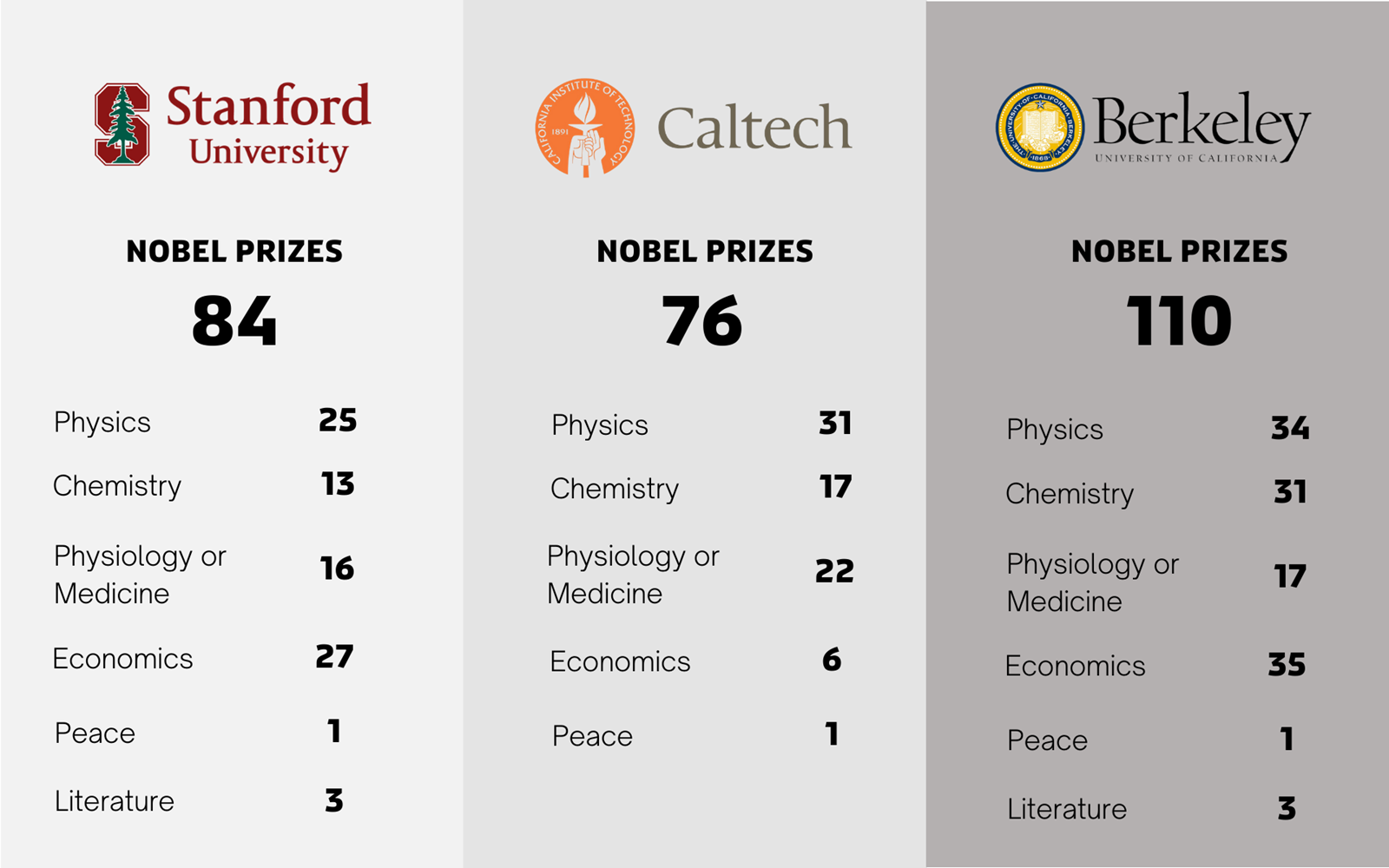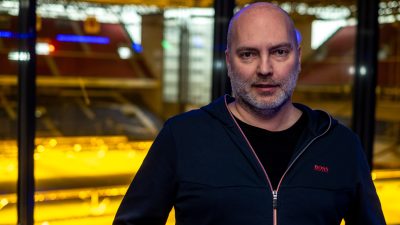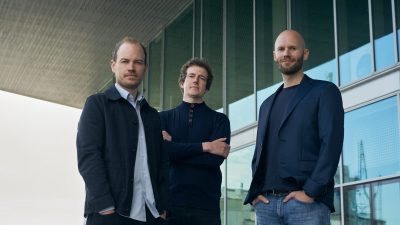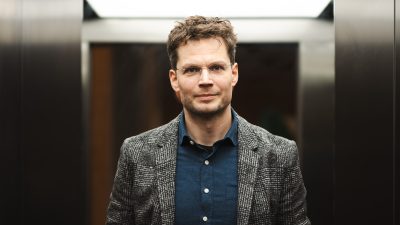
#7 Silicon Valley Going Green – Research and Development in California: A key Enabler for the Green Transition.
California is the state with the highest amount of research and development funding within energy and clean tech in the US. This week’s ‘Going Green’ article takes a closer look at how the State’s top universities are using their billion-dollar funding, and what some of the most promising research areas are, that you should look out for in the future?
California is the state with the highest amount of R&D funding within energy and clean tech in the US. Top-class universities in California are working on groundbreaking research and developments in the fight against climate change. The universities’ game-changing developments provide valuable knowledge and technologies essential for Californian – and global – efforts to reach ambitious climate goals. This research stronghold also makes California an important knowledge hub and exciting location for Danish researchers looking to collaborate on research within renewable energy and sustainability.
California is home to some of the world’s best universities, which makes it an outstanding place for research and development within renewable energy and cleantech. Some of the most renowned universities in the area, Stanford University, UC Berkeley and Caltech, have conducted groundbreaking research and come up with revolutionary discoveries over the years. Stanford University has won 84 Nobel Prizes and is currently home to 19 living Nobel laureates, UC Berkeley has won 110 prizes and currently hosts 10 laureates, while Caltech has won 76 prizes. This high number of Nobel Prizes is evidence of the innovative character and quality of the research conducted in California.

Billions in support to research
California has a very high level of private and public support for Research and Development (R&D). The political leadership in California has continuously prioritized green research, with most state-sponsored energy research being focused on demonstration projects and bringing technology to market. The total public R&D budget in California was $633 million in 2018, with $243 million, $41 million, and $36 million awarded to respectively energy, environmental and natural resources, and transportation. Also federal-level R&D programs provide important support to new studies and innovation, with the Department of Energy being one of the vital actors supporting energy R&D by directly funding research at universities. In December 2020, the US Congress adopted the most comprehensive bipartisan energy and climate legislation in the past decade, providing the Department of Energy with $39.62 billion. Parts are dedicated the department’s National Nuclear Security Agency, but major funds are also allocated to the development of various clean energy technologies, including wind, solar, energy storage, energy efficiency, carbon capture utilization and storage (CCUS), carbon removal, and nuclear energy.
Turning the eye to California, the federal Department of Energy is estimated to spend about $1.3 billion of R&D funding in the region annually. They have designed a very effective institutional structure of national laboratories and energy innovation hubs. DOE’s national laboratories cover both basic research and translating basic science to applied research. They partner with universities, research institutions and industry to do basic science and share it with private partners to spur technological breakthroughs. Two important laboratories are located in California: The Lawrence Berkeley National Laboratory hosted by UC Berkeley and the SLAC National Accelerator Laboratory located in Silicon Valley. Moreover, one of the five innovation hubs JCAP (Joint Center for Artificial Photosynthesis) is located at Caltech. The Energy Innovation Hubs are multi-institutional research teams with partners from national laboratories, universities and industry. They are advancing energy science from early stage research to point of commercialization.
How DNA Research at UC Berkeley Is Disrupting Egg Production in Israel
Basic research done in California can have wide-ranging impact. Recently, UC Berkeley professor Jennifer Doudna won the 2020 Nobel Prize in Chemistry for designing a revolutionary gene-editing tool that allows scientists to rewrite DNA—the so-called CRISPR method. This method is now used by businesses all over the world in many different sectors. For instance, Israeli scientists within the food industry have founded a promising start-up, EggXYt, utilizing the technology to create a more sustainable food production system. In the egg industry, only female chickens are useful.
The CRISPR method enables the company to detect the sex of chick embryos before hatching, thus eliminating the need to kill male chicks after hatching. The non-incubated male eggs could instead be sent to the food market, helping to avert a global egg shortage.
Not all of the university research funding is public. Many universities in the US are private with Stanford as a prime example. These universities are conglomerates in themselves and fund much of their own research. Private universities are still eligible for public funding for specific projects, – Stanford e.g. reports that the federal government sponsors approximately 75 percent of their externally funded projects. While public universities like UC Berkeley are partly funded by state government, they also fund research activities through tuition, research funding, philanthropy, and other sources. There is also a development towards more privately sponsored research by the industry.
While this is a general trend, it is also present within the energy sector, an example is BP funding projects at UC Berkeley and in partnership creating The Energy & Biosciences Institute. For the universities, this is a way of funding new research exciting projects while the sponsoring companies gain access to hardware and intellectual capacity enabling them to do research that they themselves could not perform. These types of new partnerships and funding structures not only enable more research but also help to close the gap between science and industry, making sure that findings make their way to the market. However, this also creates some concerns about the impartiality of science. The interests of the industry are not necessarily aligned with the public interest and while the industry cannot dictate research results, they can by their investments influence which themes are being researched.
At a university level, Stanford University, UC Berkeley and Caltech all work with immense budgets, allowing them to attract global talent and also conduct important basic research in fields such as dark matter, quantum physics and theoretical economy, enabling new transformative discoveries.
World-class universities with big budgets:
- Stanford University: Ranked #2 in the world with an annual budget of $6.8 billion.
- Caltech: Ranked #4 in the world with an annual budget of $3.4 billion.
- UC Berkeley: Ranked #7 in the world with an annual budget of $3 billion.
World-class institutes working on renewable energy and sustainability
Caltech, Stanford and UC Berkeley are home to some of the leading research communities within renewable energy and cleantech. Caltech houses the Resnick Sustainability Institute which is a hub for energy and sustainability research. With a new donation of $750 million the institute has backing to do sustainability research in their 4 core initiatives: sunlight to everything, climate science, water resources, global ecology and biosphere engineering. Moreover, the university also hosts JCAP (Joint Center for Artificial Photosynthesis) which is one of DOE’s Energy Innovation Hubs and the nation’s largest effort focused on artificial photosynthesis.
“The SUNCAT center at Stanford University is a natural anchor for research into Power2X”, Bo Brummerstedt Iversen, Professor in Chemistry at Aarhus University
University of California consist of four campuses; UC Berkeley, UC Davis, UC Merced, and UC Santa Cruz. All four campuses have their own institutes and centers focusing on energy research. As mentioned above, UC Berkeley is also host to Lawrence Berkeley National Laboratory – a national laboratory funded by DOE. The laboratory – also known as Berkeley Lab – focuses on physical sciences, energy sciences and energy technologies amongst other things. Of further interest to Danish researchers, they have an International Energy Studies Group Visiting Scholar program.
University of California also attempts to unite the campuses’ different research strengths in joint initiatives. One of these cross-cutting initiatives is the Center for Information Technology Research in the Interest of Society (CITRIS) – a center that Innovation Centre Silicon Valley is in close dialogue with. CITRIS was created to shorten the pipeline from laboratory research to development of companies. From concept to prototype, the CITRIS invention ecosystem includes competitive seed funding, specialized testbeds, laboratories, and a startup accelerator. One of the center’s research areas is Energy and Environment, and in the Sustainable Infrastructures Initiative, researchers pursue information technology research in energy, water, and transportation as parts of the cyber-infrastructure of a sustainable society.
At Stanford University, the Precourt Institute for Energy is one of Stanford’s five cross-campus research institutes and the focal point of energy research. Research efforts span across renewables, storage and grid, policy and market, end use, transportation, nuclear and environmental impact and the institute unites more than 200 researchers working across different centers and disciplines. At Innovation Centre Denmark, we specifically maintain a close dialogue with the affiliated center The SUNCAT Center for Interface Science and Catalysis which explores atomic-scale design of catalysts critical to future energy technologies. The center is a partnership between the Stanford School of Engineering and SLAC National Accelerator Laboratory. This close dialogue facilitates collaboration and exchange activities between researchers from Danish and American institutions on areas such as capture, storage and use of CO2 as well as energy storage and conversion – all themes that are central to Denmark’s new green research strategy.
The strategy further identifies Power2X as a prioritized subject, and according to prof. Bo Brummerstedt Iversen, SUNCAT is a natural anchor for research in this area with its research on electrocatalysis. Iversen is a Professor in Chemistry at Aarhus University and he spent the fall of 2019 at SUNCAT doing a research stay facilitated by Innovation Centre Denmark. He highlights Stanford’s focus on application and informs that there have been concrete results of his research stay:
“I came home from Stanford with new ideas about how to link my basic research to application, and formed a new group on this basis”, Bo Brummerstedt Iversen, Professor in Chemistry at Aarhus University
Groundbreaking research in Silicon Valley
Universities and research are a big part of what drives innovation in Silicon Valley. Universities provide the educational background and foundation of many of the scientists and specialists located in the tech giants’ R&D departments, who are working on developing tomorrows technologies and university alumni often take the leap of starting their own business. Research is also the source of many of the groundbreaking discoveries that entrepreneurs, investors and companies subsequently take and mature into ready-to-market solutions that can help us solve some of today’s biggest challenges. For instance, what if quantum computing could allow us to solve problems that would be impossible to solve with classic computers, and help us develop improved batteries and new clean energy devices? And can artificial photosynthesis help us to provide a renewable energy source? These are all questions that are being answered right now at some of the top Californian universities.
Here you can read more about some of the current research in Silicon Valley, which could perhaps be the next game-changers the fight against climate change.
Quantum computing
Big Science to go green
What if we, alongside finding the next innovative green technologies, could also change the entire way of doing research? Quantum computing has the capacity to revolutionize how we do research by allowing us to solve problems that would appear impossible with classic computers. Silicon Valley is poised to become the world centre for research in quantum computing. As part of the federal government’s effort to speed up the development of quantum computers, the National Science Foundation (NSF) has awarded USD 25 million to UC Berkeley to establish a multi-university institute focused on advancing quantum science and engineering, situating the new research centre near the heart of the computer industry in Silicon Valley.
The potential for innovation is endless. As Eric Hudson, UCLA professor of physics and co-director of the new institute frames it: “Scientific problems that would take the age of the universe to solve on a standard computer potentially could take only a few minutes on a quantum computer.” For example, quantum computers could make us better at simulating the properties of molecules, thus improving our understanding of how the world works. In turn, this might enable us to develop improved batteries and new clean energy devices, and even help us find cheaper and more readily available catalysts for carbon capture. If we are looking for technologies that could change the game of climate research, quantum computing is surely a clear candidate.
Unconventional superconductivity
High-temperature superconductivity
High-temperature superconductivity was discovered in 1986, and despite almost thirty years of intense research, the underlying physics of these materials is still not understood. However, scientists at the top Californian universities are trying to unlock the mysteries of superconductivity, with huge potential for the green transition. In a normal conductor, as much as 90% of the generated electricity is lost, but superconductors are materials that let electricity flow without losing energy. Practical superconductors would make power grids and many devices, including new computers, faster and much more energy efficient. Recently, scientists at the Department of Energy’s SLAC National Accelerator Laboratory and Stanford University made a new class of material (nickel oxide) that shows clear signs of superconductivity. This is the first in a potential new family of unconventional superconductors—and while the research is still at a very early stage, it could revitalize the research on superconductors and enable us to create faster and ultra-efficient electronics.
Artificial photosynthesis
Copying Nature’s green talent
In the current quest for alternatives to fossil fuels, scientists suggest that we can harness the power of the sun in the same way that plants do: photosynthesis. In artificial photosynthesis, researchers attempt to copy the same process with simpler nanostructures, something that has only recently been possible due to breakthroughs in nanotechnology in the areas of imaging and manipulation. At the Stanford SUNCAT Center, researchers currently investigate how to use this process to provide a renewable energy source. Furthermore, artificial photosynthesis on a large industrial scale has the potential to reverse global warming, since the process consumes carbon dioxide and releases oxygen.
New generation of batteries
Improving existing innovations
Sometimes, ground-breaking innovation can come from improving existing items that we use every day, and this can have a huge impact. Battery research falls into this category, as it could improve one of our existing energy storage technologies. Berkeley Lab has deep expertise in materials research, materials design and energy storage technologies, and they are currently working on better battery alternatives from cobalt-and nickel-free batteries to smaller and more powerful multi-valent batteries. At Stanford University, scientists have just discovered an entirely new approach to making lithium-ion batteries lighter, safer and more efficient, by reengineering one of the heaviest battery components, so they weigh 80% less and immediately quench any fires that flare up. This new type of battery has the potential to extend the driving range of electric vehicles and reduce the danger that laptops, cell phones and other devices will burst into flames.
Collaboration Opportunities?
In a scenario where technological breakthroughs and entrepreneurial spirit and vision are requisite to achieving global climate goals, the ecosystem in Silicon Valley holds the ingredients to success. Currently, there are several research projects and industry programs in Silicon Valley looking into solutions that can move forward the green transition, which could be relevant for Danish research missions and companies looking for strategic research collaboration. At Innovation Centre Denmark Silicon Valley, we stay updated and can facilitate contact to strategic partners at Stanford University and UC Berkeley among other research institutions. Please reach out to hear more.
This article was written by The Innovation Centre Denmark in Silicon Valley and is brought to you as a part of the ‘Silicon Valley Going Green’ series in collaboration with the Innovation Centre.












Comments